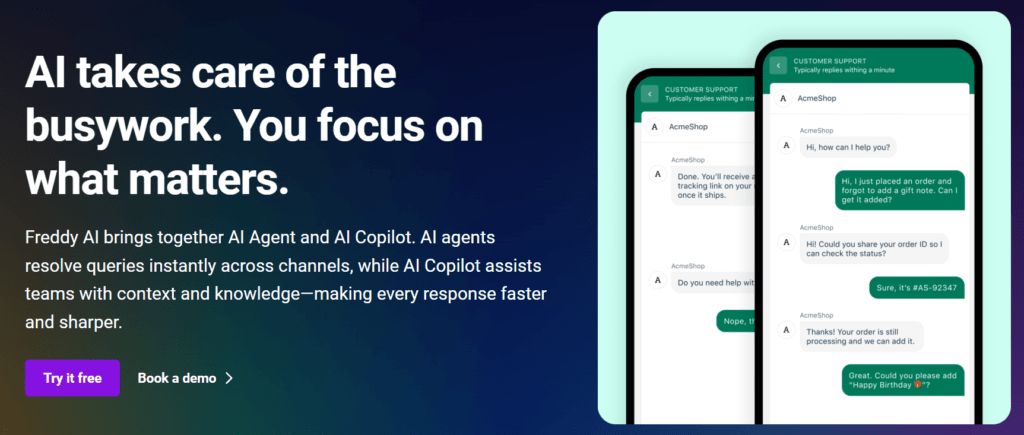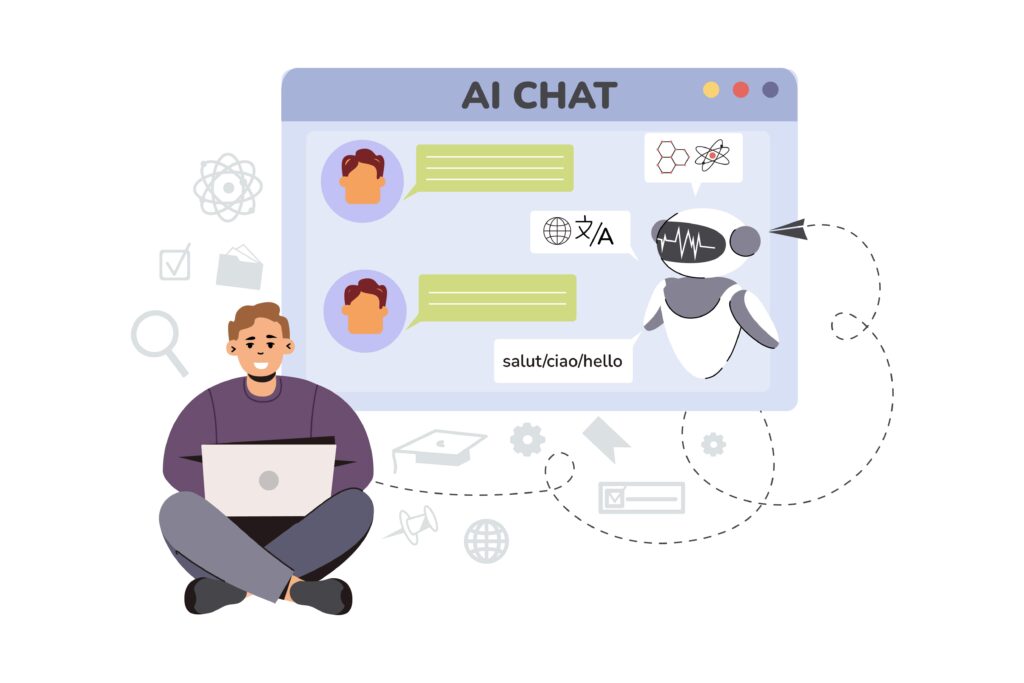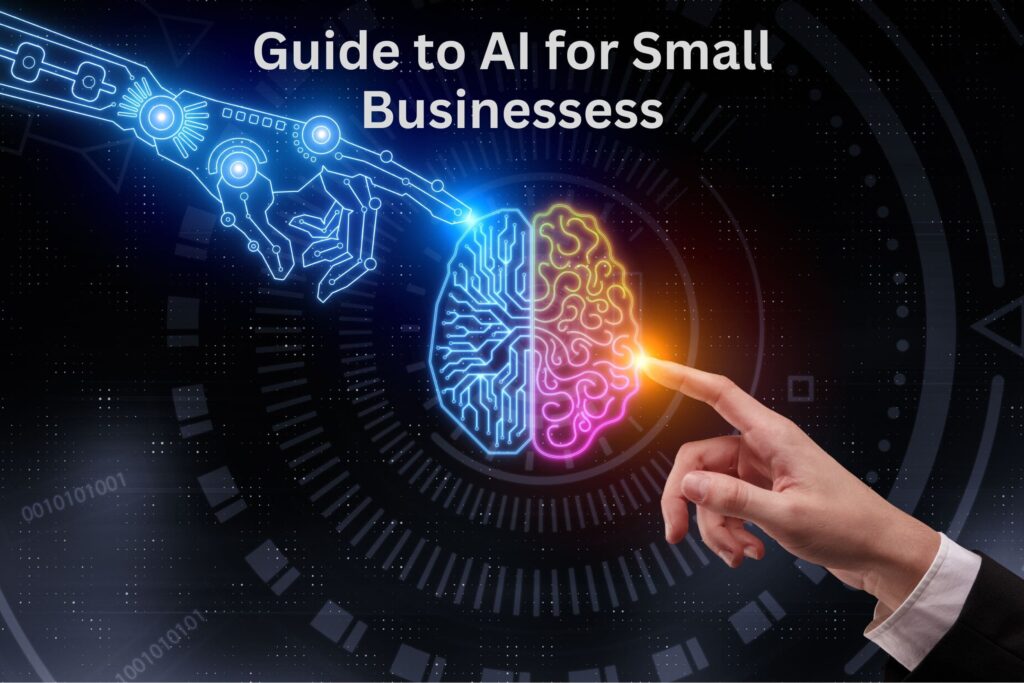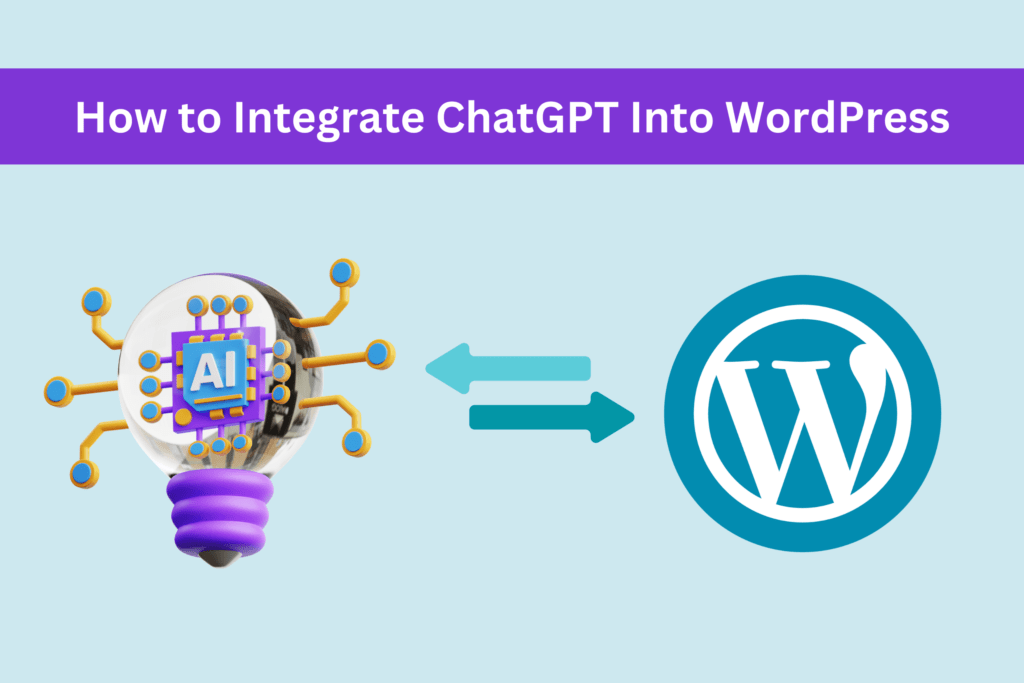In today’s fast-evolving digital landscape, IT support is undergoing a radical transformation—and it’s happening faster than ever. The year 2025 marks a turning point, where AI-powered help desks have shifted from experimental to essential. Whether it’s resolving repetitive tickets, assisting users through intelligent chatbots, or automating system diagnostics, AI is now deeply embedded in IT workflows. The best AI for help desk IT issues in 2025 isn’t just a tool—it’s a strategic partner. These smart-systems don’t just react to problems; they prevent them. They empower technicians with instant insights, reduce downtime through predictive analytics, and enhance user satisfaction with lightning-fast resolutions.
As businesses scale and remote work becomes a permanent fixture, traditional support models struggle to keep up. That’s where AI shines. It brings agility, intelligence, and resilience to help desk operations—making IT support not just more efficient, but truly proactive. In this blog, we’ll explore the top AI solutions for help desk IT issues, how they’re transforming support across industries, and why adopting them today is a decision that will future-proof your service desk tomorrow.
- Why AI is Critical for IT Help Desks Today
- Best AI Tools for IT Help Desk Issues in 2025
- Key AI Features That Matter in 2025
- Real-World Use Cases of AI for Help Desk IT Issues
- Challenges & Considerations When Adopting AI for IT Help Desks
- Future Trends in AI-Driven Help Desks
- How to Choose the Best AI for Help Desk IT Issues
- Final Thoughts: Best AI for Help Desk IT Issues in 2025
Why AI is Critical for IT Help Desks Today
The modern IT environment is far more complex than it was a decade ago—hybrid infrastructures, global teams, BYOD policies, and 24/7 service expectations have pushed traditional help desks to their limits. In 2025, the adoption of AI is no longer optional; it’s a strategic imperative. AI is reshaping how support is delivered, enhancing user satisfaction while streamlining backend operations.
Whether you’re a global enterprise managing thousands of endpoints or an MSP juggling multiple client environments, the benefits of AI reach every corner of your support architecture. By reducing manual bottlenecks and unlocking real-time intelligence, AI is helping IT teams stay ahead of issues—not just react to them.
Here’s why:
1. Faster Issue Resolution
- AI-driven ticket triage categorizes and routes issues instantly based on content, user behavior, and historical data.
- Suggested resolutions pulled from internal knowledge bases and previous tickets save time and reduce agent workload.
- Auto-diagnostics run system checks before human intervention, shaving precious minutes off response times.
2. 24/7 Availability
- AI chatbots and virtual agents handle user requests any time of day—perfect for global teams in multiple time zones.
- Multilingual support enables assistance in a user’s native language, improving accessibility and experience.
- Self-service portals powered by AI guide users through troubleshooting steps without waiting for live support.
3. Cost Efficiency
- Automation of repetitive tasks like password resets, software installations, and network pings reduces dependency on L1 staff.
- Lower ticket escalation rates save money on senior support interventions.
- Scalable AI agents allow support teams to manage growth without proportionally increasing headcount.
4. Predictive Capabilities
- AI models trained on historical ticket data can forecast outages, user demand spikes, and service degradation.
- Proactive alerts notify IT teams before issues become critical, minimizing downtime.
- Trend analysis tools help managers spot recurring problems and address root causes systematically.
5. Data-Driven Decisions
- Real-time analytics dashboards show metrics like resolution time, ticket volume, and user satisfaction trends.
- Sentiment analysis gauges user frustration in chat and email, helping prioritize sensitive cases.
- Feedback loops from AI suggestions allow systems to improve and adapt continuously based on outcomes.
Best AI Tools for IT Help Desk Issues in 2025
Here is the list of the 5 Best AI for Help Desk IT Issues:
1. Microsoft Copilot for IT Service Management
What It Does: Microsoft Copilot for IT Service Management integrates seamlessly with platforms like Microsoft Teams, Outlook, ServiceNow, and Power Platform to bring intelligent assistance directly into daily workflows. It enables IT agents to interact with system data using natural language queries, generate real-time reports, and troubleshoot issues faster. Copilot offers contextual recommendations based on telemetry, user history, and service records—allowing for smarter automation of tasks like password resets, software patches, and escalation tracking. It also helps agents streamline documentation by summarizing service activity and retrieving relevant knowledge base content instantly.
Use Cases:
- Diagnosing network outages using system telemetry.
- Drafting resolution messages or updates for agents.
Why It Stands Out: Deep integration with enterprise tools and contextual awareness makes it a game-changer.
2. Freshworks Freddy AI

What It Does: Freshworks Freddy AI enhances the Freshservice platform with a suite of AI-powered capabilities. It handles tickets more intelligently by applying sentiment analysis and contextual prioritization, ensuring urgent issues are flagged appropriately. Freddy simplifies self-service for end users by recommending resources like tutorials and knowledge articles based on their query patterns. It also assists agents by suggesting responses, mapping ticket paths to departments, and identifying incident clusters for proactive issue resolution. With asset monitoring and predictive analytics, Freddy helps teams optimize IT resources and improve support efficiency.
Use Cases:
- Automatically categorizes incoming issues.
- Suggests relevant knowledge base articles to end users.
Strengths: Excellent for mid-market businesses and startups.
3. Zendesk AI

What It Does: Zendesk AI brings dynamic automation to ticket management by using machine learning to classify, route, and personalize support interactions. It suggests macros and responses that align with specific contexts and past user behavior, minimizing repetitive tasks for agents. Zendesk continuously adapts its recommendations by capturing agent feedback, analyzing tone in user messages, and referencing customer history to deliver more meaningful responses. Its ability to recognize urgency and language nuances helps prioritize cases and improve first-touch resolution, making it a powerful tool for multilingual and global IT support teams.
Use Cases:
- Supports multilingual IT teams.
- Learns user behavior to fine-tune escalation paths.
Unique Edge: Seamless integration with internal knowledge and external support platforms.
4. ServiceNow Predictive Intelligence
What It Does: ServiceNow Predictive Intelligence leverages natural language processing and data modeling to identify patterns in incidents and automate ticket triage across complex IT environments. It categorizes and routes tickets with impressive accuracy, forecasts support demand spikes, and pinpoints recurring service issues. The platform presents performance insights through dashboards, enabling managers to take preventive action and streamline resource allocation. Its ability to recommend resolution workflows, automate change management tasks, and connect with low-code apps makes it ideal for enterprise-level IT operations seeking scalable AI integration.
Use Cases:
- Forecasts peak support times.
- Recommends preventive actions based on ticket trends.
Trusted By: Large enterprises and government IT infrastructures.
5. BMC Helix ITSM with AI
What It Does: BMC Helix ITSM with AI excels in managing hybrid and multi-cloud environments through its intelligent automation capabilities. It detects anomalies, initiates auto-remediation, and helps IT teams respond to service disruptions before users are affected. Its AI chatbots resolve first-level tickets such as login issues or access requests while learning from user behavior to personalize support. Helix also features cognitive search functions that help agents locate documentation and fix scripts quickly, along with analytics that alert teams to compliance risks, resource misuse, and infrastructure vulnerabilities—all without manual oversight.
Use Cases:
- Auto-remediation of network issues.
- Intelligent chatbot assistance for Level 1 queries.
Key Differentiator: Strong capabilities in handling hybrid infrastructures.
Key AI Features That Matter in 2025
| Feature | Benefits | Example Tools |
|---|---|---|
| NLP-Powered Chatbots | Better user experience, faster interactions | Copilot, Freddy, Zendesk |
| Predictive Analytics | Reduces downtime, prevents issues | ServiceNow, BMC Helix |
| Auto-Triage & Routing | Minimizes errors, speeds up resolution | Zendesk, Freshworks |
| Workflow Automation | Enhances agent productivity | Copilot, ServiceNow |
| Sentiment Analysis | Prioritizes escalations intelligently | Zendesk, Freshservice |
Real-World Use Cases of AI for Help Desk IT Issues
Enterprise IT Support
- AI helps route tickets to the correct departments based on user roles and system logs.
- Predictive models reduce downtime by flagging hardware failures before they occur.
MSPs and Third-Party IT Firms
- Virtual agents handle high ticket volumes during peak hours.
- Smart analytics help scale operations without increasing headcount.
Educational Institutions
- AI chatbots answer recurring tech queries from students and faculty.
- Automates software license management and renewal alerts.
E-Commerce & Retail IT
- Handles seasonal surges in support queries.
- Monitors server load and preemptively alerts staff to spikes.
Challenges & Considerations When Adopting AI for IT Help Desks
While AI brings significant advantages to IT support environments, implementation isn’t without its hurdles. Understanding these challenges is key to making smart, sustainable decisions when integrating AI into your help desk strategy.
1. Data Privacy & Compliance
As AI tools access sensitive user data—such as system logs, error reports, and ticket histories—privacy concerns become paramount. IT teams must ensure that tools comply with global standards like GDPR, HIPAA, and ISO/IEC 27001. Improper handling of data could lead to fines or security breaches. Additionally, many AI systems rely on third-party cloud environments, so organizations must audit vendor compliance and verify how data is processed, stored, and encrypted.
2. Integration Complexity
AI platforms don’t operate in isolation—they need to seamlessly integrate with ticketing systems, communication tools (like Microsoft Teams or Slack), asset management software, and sometimes ERP platforms. Lack of interoperability can lead to fragmented workflows or data silos. Businesses must assess whether their AI solution supports pre-built connectors, open APIs, or low-code customization to reduce integration friction.
3. Model Bias & Accuracy
AI systems learn from historical data—and if that data includes biased decisions, the model may perpetuate those biases. For example, if certain types of tickets were historically deprioritized, the AI might continue doing so unjustly. Regular model training, auditing, and manual overrides are necessary to ensure decisions remain fair, transparent, and accurate. IT leaders must build review mechanisms to catch false positives and inappropriate recommendations.
4. Human Oversight & Accountability
AI isn’t a magic fix; it augments human ability, not replaces it. Poorly monitored AI can lead to wrong diagnostics, insensitive chatbot conversations, or escalations being mishandled. Organizations must define clear policies on when and how agents can override AI decisions, provide feedback loops for model improvement, and maintain logs for accountability and auditing purposes.
5. Change Management & User Adoption
Introducing AI often requires shifts in workflows, retraining staff, and updating internal documentation. Resistance from support teams who feel threatened by automation or overwhelmed by learning curves can stall progress. Leaders should emphasize AI as an enabler, not a replacement, and invest in user training, pilot programs, and onboarding frameworks to facilitate smooth transitions.
6. Cost vs. ROI
While AI can reduce long-term costs, upfront investments can be significant. License fees, deployment time, integration efforts, and ongoing model tuning all factor into the total cost of ownership. Companies must evaluate whether the expected gains—in ticket resolution time, customer satisfaction, and agent productivity—justify the financial outlay. A cost-benefit analysis aligned with strategic IT goals is essential.
Future Trends in AI-Driven Help Desks
- AI + AR Integration: Technicians will get real-time visual instructions through AR headsets powered by AI.
- Emotional AI: Sentiment-driven responses will prioritize and personalize communication more effectively.
- Edge AI: On-device models will enable faster diagnostics with minimal latency.
- Multilingual Bots with Cultural Nuance: Expanding support across geographies with nuanced understanding.
How to Choose the Best AI for Help Desk IT Issues
Selecting the ideal AI solution for your IT help desk isn’t just about features—it’s about aligning technology with workflow, scale, and long-term strategy. With dozens of platforms boasting automation and predictive capabilities, making the right choice requires a careful evaluation of both technical specs and business outcomes.
Start by framing your decision around these key dimensions:
1. Infrastructure Compatibility
Begin with a clear inventory of your existing tools—whether it’s ServiceNow, Zendesk, Jira, or Microsoft 365. The right AI should offer pre-built integrations or customizable connectors to avoid long onboarding cycles and data silos. For hybrid environments and legacy systems, prioritize platforms with strong API flexibility and low-code extensibility.
2. Support Volume & Complexity
Match AI capabilities to your ticket load. Are you dealing with repetitive L1 issues like password resets and software provisioning, or complex network troubleshooting and compliance requests? Lightweight platforms with smart routing may suffice for small teams, while enterprise-grade AI is necessary for handling thousands of tickets and cross-department escalations.
3. Automation vs. Intelligence
Not all AI is built equally. Some tools specialize in automation—streamlining repetitive tasks—while others offer advanced predictive intelligence and real-time analytics. If your help desk is reactive and overburdened, look for AI that forecasts issues and enables proactive maintenance. If you’re seeking efficiency gains, automation-first platforms might be enough.
4. Security & Compliance Standards
Scrutinize how the AI handles sensitive data like employee credentials, error logs, or device telemetry. Ensure the vendor complies with your region’s data governance standards (GDPR, HIPAA, SOC 2, etc.) and offers audit trails, encryption, and robust access controls. Platforms with built-in compliance dashboards are a bonus.
5. User Experience & Multilingual Support
The effectiveness of AI depends on how intuitive it is for both end users and support agents. Prioritize solutions with natural language processing (NLP), conversational interfaces, and multilingual capabilities. Also, consider whether the tool can adapt to different departments—HR, finance, operations—if your IT support is cross-functional.
6. Customizability & Scalability
Your needs will evolve. Look for tools that let you customize workflows, sentiment thresholds, escalation rules, and ticket categories. Whether through visual builders or developer APIs, flexibility is key. Also, ensure the platform can scale with your growth—adding teams, geographies, or services without major architectural overhauls.
7. Pricing Model & ROI Potential
AI solutions vary widely in licensing—from per-agent pricing to tiered feature bundles. Evaluate cost against projected ROI: fewer escalations, faster resolution, better satisfaction scores, and reduced agent fatigue. Many platforms offer trial periods, usage reports, or cost simulators—leverage them to run realistic forecasts.
Quick Checklist
| Criteria | Why It Matters | Recommended Focus |
|---|---|---|
| Platform Integration | Avoids data silos and sync issues | Microsoft Teams, ServiceNow, Freshworks |
| Automation vs Predictive AI | Aligns with resolution strategy | ServiceNow for forecasting, Freddy for speed |
| Data Security & Compliance | Protects sensitive data and ensures auditability | GDPR, HIPAA, SOC 2 compliance-ready vendors |
| Ease of Use | Boosts adoption among users and agents | NLP, intuitive UI, chatbot responsiveness |
| Scalability | Future-proofs your IT operations | API extensibility, multi-tenancy support |
| ROI Clarity | Ensures long-term cost efficiency | Simulation tools, analytics dashboards |
In Short, keep in mind these factors:
✅ What platforms does your team already use?
✅ Do you need predictive features or just automation?
✅ What’s the ticket volume and complexity?
✅ Is customization important?
✅ What kind of support integrations are needed—Slack, Teams, etc.?
Final Thoughts: Best AI for Help Desk IT Issues in 2025
In 2025, AI isn’t just a nice-to-have—it’s the backbone of future-ready IT help desks. With tools like Microsoft Copilot and BMC Helix leading the charge, AI is transforming support from reactive troubleshooting to proactive, predictive service delivery.
Choosing the right solution demands more than tech specs—it calls for strategic alignment with your team’s goals and infrastructure. The most effective help desks will fully embed AI into their operations, fostering long-term agility and customer satisfaction.
Key Takeaways:
- AI accelerates ticket resolution with smart automation and real-time insights
- Platforms vary—choose one that fits your environment and scale
- Integration, compliance, and agent adoption are critical for ROI
- Embedding AI into your support culture ensures lasting impact
Read More:
How to Integrate ChatGPT Into WordPress: The Beginner’s Guide
Unlocking Artificial Intelligence for Small Businesses: A Smart Owner’s Guide



